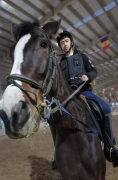Shanghai scientists study altruistic behavior in monkeys
A study by Shanghai scientists published on the website of the United States-based Current Biology on Thursday showed that having infants in the family could promote altruistic behavior in marmosets, a species of monkeys.
The research led by scientists Gong Neng and Liang Zhifeng from the Institute of Neuroscience, State Key Laboratory of Neuroscience, Center for Excellence in Brain Science and Intelligence Technology of the Chinese Academy of Sciences.
Altruistic behavior is unselfish behavior that could benefit others but not oneself, which is common in the society. However, some mental illnesses, such as autism and antisocial personality disorder, are often accompanied by abnormally altruistic behavior. As such, the scientists believe that the evaluation of altruistic behavior and exploring its neural basis can improve understanding of these illnesses and provide new clues to therapies.
Previous studies in altruistic behavior were mainly performed on humans with noninvasive techniques, and very few was done on rodents due to their relatively simple social behavior and uncommon altruistic behavior. An appropriate animal model for study altruistic behavior was thus needed.
Common marmosets live in monogamous family groups, exhibit cooperative breeding and rich pro-social behaviors, such as sharing food with others, said the scientists. These features indicate that this animal might be a useful non-human primate model for the study of altruistic behavior.
In the study, the researchers established a novel rescue paradigm to evaluate the marmoset's altruistic behavior and found that marmoset parents and older siblings are more motivated to rescue young infants rather than their favorite food.
This infant-rescue behavior declined as infants grew up - parents did not rescue juvenile marmosets beyond 2 months old.
The researchers also found that infant calls alone could trigger this rescue behavior. Such rescue behavior occurred only in family groups that had young infants.
To explore the underlying neural mechanism, the researchers performed functional magnetic resonance imaging on conscious marmosets.
They found that the infant's vocalization could elicit activation of specific brain areas, including auditory and insular cortices, in adult marmoset parents with infants in their family groups. Such activation was absent in marmosets that do not have infants.












